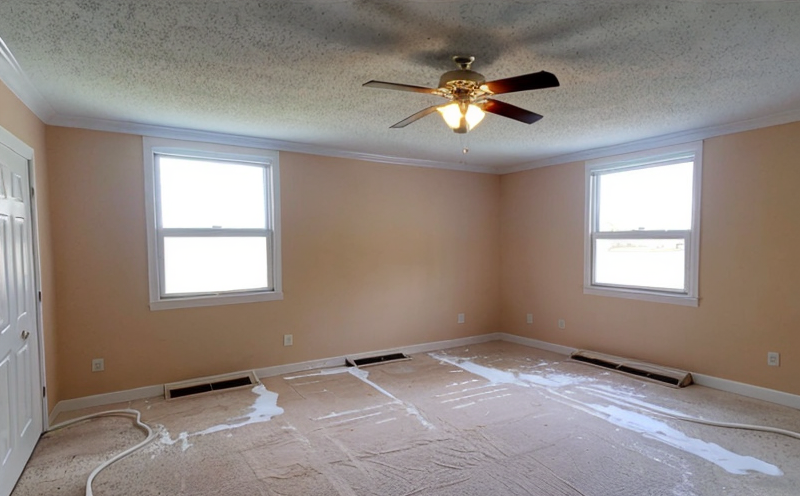ASTM E1530 Thermal Transmission Properties by Heat Flow Meter
The ASTM E1530 standard provides a method to determine the thermal properties of materials using a heat flow meter. This test is particularly useful for industries where understanding material behavior under temperature variations is critical, such as in electronics manufacturing, aerospace, and automotive sectors.
Thermal transmission properties are essential for ensuring that materials behave predictably across varying temperatures. This property is crucial in designing products that can withstand extreme environmental conditions without compromising performance or safety. The heat flow meter measures the amount of energy required to increase a material's temperature by one degree Celsius, under specified boundary conditions.
The ASTM E1530 protocol involves placing a sample between two plates and applying controlled thermal fluxes. Heat is generated on one side of the sample while the other side is cooled. The system measures the heat flow through the sample and calculates its thermal properties based on this data. This process ensures accurate determination of key parameters such as thermal conductivity, specific heat capacity, and thermal diffusivity.
Specimen preparation for ASTM E1530 involves selecting appropriate dimensions to ensure representative testing. The standard specifies that specimens should be rectangular prisms measuring at least 6 inches by 6 inches by 0.4 inch thick. It is crucial that the sample edges are free from defects and have a smooth surface finish.
The instrumentation used in ASTM E1530 includes a heat flow meter apparatus, which consists of two parallel plates with heaters on one side and coolers on the other. A thermocouple measures the temperature difference across the sample. The system is calibrated to ensure accurate measurements. Once prepared, samples are placed between these heated and cooled plates.
The test procedure involves applying a specified heat flux at one end of the sample while maintaining a constant temperature gradient throughout. The system records the amount of heat required to maintain this condition, which allows for calculation of thermal properties based on the formula derived from Fourier's law:
\[ q = -k \cdot A \cdot \frac{\Delta T}{\Delta x} \]Where \(q\) is the heat flux, \(k\) is the thermal conductivity, \(A\) is the cross-sectional area, \(\Delta T\) is the temperature difference across the sample, and \(\Delta x\) is the thickness of the sample.
The results from ASTM E1530 are presented in a report that includes calculated values for thermal conductivity, specific heat capacity, and thermal diffusivity. These metrics are vital for industries where material performance under temperature variations can affect product reliability and safety.
| Industry | Possible Applications |
|---|---|
| Aerospace | Evaluating materials for use in high-temperature engines and components. |
| Automotive | Determining material suitability for heat exchangers and engine parts. |
| Electronics Manufacturing | Assessing thermal management of circuit boards and semiconductors. |
Industry Applications
- Aerospace: Evaluating materials for use in high-temperature engines and components.
- Automotive: Determining material suitability for heat exchangers and engine parts.
- Electronics Manufacturing: Assessing thermal management of circuit boards and semiconductors.
Quality and Reliability Assurance
- Ensures consistent performance across varying temperatures, critical for reliability in extreme conditions.
- Aids in material selection by providing accurate thermal property data to prevent failures due to thermal stress.





